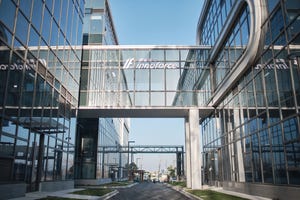
Through the halls of the Westin hotel in London, UK, escalators descended into a gathering of CGT luminaries.
The European Cell & Gene Therapy Summit 2024 commenced amid an air of anticipation, filled with attendees wearing tailored suits and expensive colognes.
A series of panel discussions illuminated the future of the CGT industry. Ramin Baghirzade, Charles River Laboratories’ senior director of gene therapy, hosted one such panel on investor and market insights.
Panelists discussed the changing business landscape of CGTs and how product efficacy impacts investor behavior.
Tiziana Rossetti, principal, Sofinnova Partners said that investors want more information. “In 2021, the number of acquisitions in preclinical was quite higher, however, lately, the focus has moved back to Phase II, because they need to have efficacy data.”
The panelists noted that while funding had increased – reaching $10.9 billion in the first half of 2023 – investments had become more strategic and focused.
Simon Goldman, partner at AlbionVC, emphasized high inflation rates as a principal reason for low investments. He further talked about recovery due to change in interest rates, “I think the optimistic environment we're seeing is off the back of inflation coming down. Central banks are now moving to reduce interest rates, and we're now starting to see that risk appetite has increased.”
In addition to increasing investments, experts agreed that product efficacy was central to countering lack of investment. “Capital isn't free,” highlighted Owen Smith, partner at 4BIO Capital, “It is constrained, and the bar is to get your programs to a more mature phase to justify [their acquisition].”
Panelists agreed that along with commercial viability and market access, reimbursement was also critical. According to Goldman, efficacy is the focal point for reimbursement authorities.
“Reimbursement authorities are concerned with one thing: efficacy. They'll pay for something if it adds value. While high drug costs make headlines, the real question is whether a treatment offers a therapeutic window advantage over the standard of care,” he said.
Giving the example of Orchard Therapeutics’ Strimvelis, he added, “A £500,000 ($647,527) drug may seem expensive, but when it replaces £14 million ($18 million) in care for a child with adenosine deaminase deficiency (ADA-SCID), it’s a bargain. The challenge lies in how we pay for these treatments – upfront or in installments – and whether reimbursement authorities are willing to cover such high costs. This issue has even led some companies to withdraw their therapies from markets when they can't secure the prices they need.”
About the Author
You May Also Like









